Why DUX Testing Is a Superior Method of Testing Gold in Singapore
How do you know the gold bullion you buy is genuine? This is a common question that has weighed on the minds of every gold buyer. As precious metals have risen in popularity as an integral part of wealth protection strategies, the bullion industry has also seen a rise in news reports concerning sophisticated counterfeit gold, silver, and platinum bullion.
DUX testing, developed by Silver Bullion in 2012, is a series of reliable methods for authenticating precious metals, offering a comprehensive and non-destructive approach to ensure the genuineness of bullion. The acronym "DUX" was originally conceived to represent three distinct tests: Density, Ultrasound, and X-ray Fluorescence. As DUX testing has matured over time, we have also included Electrical Conductivity Measurement as the fourth official way to test gold.
Below is the overview of DUX testing and the reasons behind it being the preferred method for detecting genuine gold bullion from counterfeit gold in Singapore.
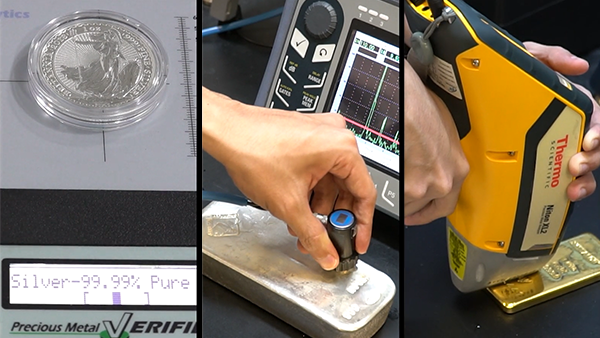
DUX COMBINES MULTIPLE METHODS TO TEST GOLD
When it comes to gold authentication, relying on a singular testing method can be a perilous endeavor. As counterfeit techniques have evolved, so too have the capabilities of fraudsters to engineer gold imitations that can bypass specific tests. These sophisticated fakes, designed to mimic the properties of genuine pure gold, can easily deceive a singular testing approach.
DUX testing uses up to five gold testing methods to accurately detect an array of gold alloys, and fake bullion coins and bars, making it impossible for fake gold bullion to pass all tests.
These five precious metal tests are:
- Density Test
- X-ray Fluorescence
- Ultrasound Test
- Electrical Conductivity Measurement (ECM)
- Magnetic Test
1. Density Test
For density tests, Silver Bullion technicians use trade-approved scales, including highly accurate electromagnetic force compensation scales, to weigh the precious metal sample.
These cutting-edge scales can detect even the 0.26% difference in density between gold and tungsten.
2. X-ray Fluorescence
An X-ray Fluorescence (XRF) test is a widely recognized technique for gold testing, prized for its non-destructive nature and its ability to provide rapid results. The process involves exposing the gold sample to X-rays, which causes the gold atoms to emit secondary (or fluorescent) X-rays. By analyzing the energy spectrum of these secondary X-rays, the XRF device can determine the composition and purity of the sample with impressive accuracy. Besides detecting the presence of other metals, an XRF test is also adept at detecting the composition of alloys, such as white gold or sterling silver, in testing jewelry and bullion.
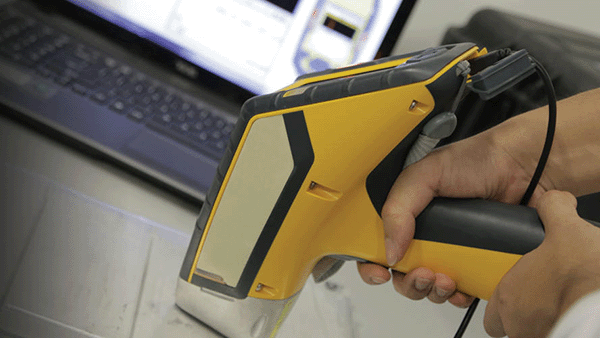
3. Ultrasound Test
Ultrasound testing works by sending high-frequency sound waves into the material being tested. These waves travel through the material and are either reflected back or transmitted to the other side. By measuring the speed of sound (celerity) and the amount of time it takes for these waves to travel through the material, one can gain insights into the material's properties.
While certain gold-plated items may bypass surface tests such as the XRF test, they are likely to be detected with an ultrasound test since this testing method penetrates deep into the sample to ensure everything is real gold.
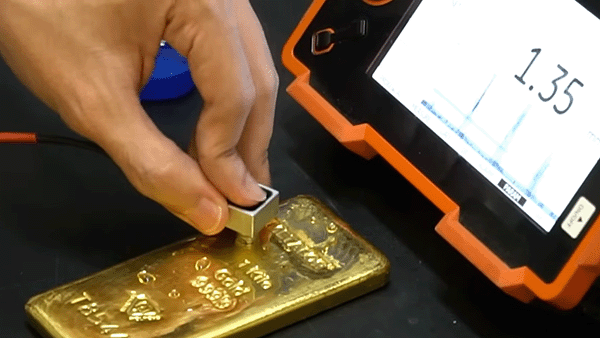
4. Electrical Conductivity Measurement (ECM)
Electrical conductivity gauges a material's capacity to conduct electric current. Gold, being a good conductor, has a specific conductivity value that can be measured and compared to known standards.
Many metals have conductivity values distinct from gold. For instance, while silver has a higher conductivity than gold, other metals commonly used in counterfeit gold items, like tungsten or copper, have different conductivity values. Electrical Conductivity Measurement can effectively discern these differences.
For ECM tests, we use an electronic gold tester like the Precious Metal Verifier from Sigma Analytics to test samples against the known electrical conductivity of gold.
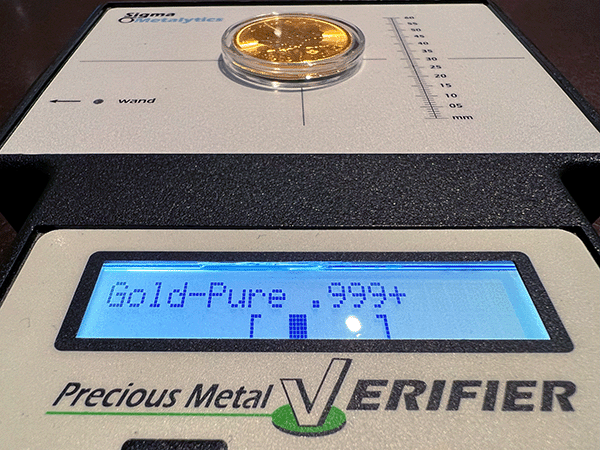
DUX ACCURATELY AUTHENTICATES INVESTMENT GRADE GOLD
Since 2012, investment grade bullion, which is considered Investment Precious Metal (IPM), is exempted from Singapore's sales tax - the Goods & Services Tax (GST). Regardless of buying IPM gold bars, coins, or other precious metals, including silver and platinum, there is no GST to be paid when you buy precious metals from a bullion retail shop in Singapore.
The tax exemption of precious metals demonstrates governmental support to develop Singapore into an international precious metal hub and attract foreign investments into the country. This is an excellent development if you are seeking to buy and store gold and silver bullion in a Singapore precious metal vault.
For customers to have peace of mind storing precious metals, the ability to test gold pieces to weed out fake gold bars and coins, and ensuring that all stored precious metals are genuine is vital.
Investment grade precious metals often are produced by reputable refineries and government mints that are London Bullion Market Association (LBMA) accredited and are known for their product quality. These precious metal bars and coins are produced to meet rigorous specifications in terms of dimensions, metal content and physical appearance.
Silver Bullion's DUX testing method is well able to detect even the slightest variations in mass when used to test investment-grade gold, silver, and platinum. The combination of multiple different types of testing methods allows a metal sample to be thoroughly tested to ensure the authenticity of your gold, silver, or platinum.
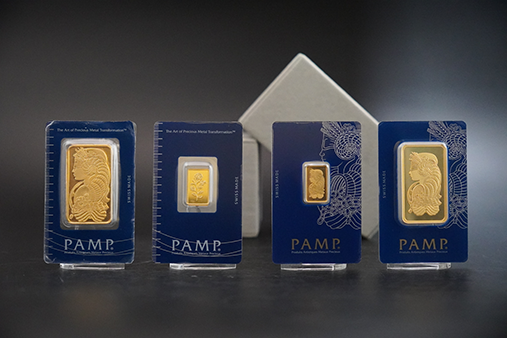
DUX GOLD TESTING EASILY DETECTS GOLD PLATED BULLION COINS AND BARS
Gold plating is a common way to create fake gold bars and gold jewelry. It involves the application of a thin layer of gold onto the surface of another metal, often a less expensive one, to give it the appearance of solid gold.
Counterfeit gold pieces differ in quality - lower quality fake gold jewelry or bars can be easily detected, while higher quality fakes can be harder to detect. Poorly made counterfeit gold often uses a larger portion of base metals such as iron and nickel, which can be easily detected with a simple magnet test, since gold is non-magnetic.
A higher quality fake gold item having a thick gold plating or a hollowed bar of gold filled with tungsten may bypass surface tests like X-ray fluorescence. Given that the density of tungsten is very similar to gold, such a fake gold piece may also bypass a density test.
Silver Bullion's DUX testing method is adept at detecting any underlying metal beneath a gold-plated sample. Regardless if the test sample is gold or silver plated, such counterfeit bullion can be identified swiftly using an ultrasound test that penetrates deep into the tested metal regardless of the plating thickness.
GUARANTEED BULLION SELLBACK AND BUYBACK
Silver Bullion is a reputable bullion dealer that is an LBMA member and SBMA member (Singapore Bullion Market Association). We are very particular about the bullion we sell or buy back. All precious metals to be transferred into our vault are first authenticated using DUX testing performed by The Safe House vault.
Ensuring that all gold, silver, and platinum are genuine is exactly what guarantees our buyback of bullion. Moreover, our bullion storage is not outsourced but instead operated by The Safe House (TSH), a state-of-the-art storage facility with a bonded warehouse status, located within The Reserve.
Having selling, buyback, bullion storage and precious metals authentication done under ‘one roof' is what enables Silver Bullion to avoid any possibility of selling or buying back counterfeit bullion.
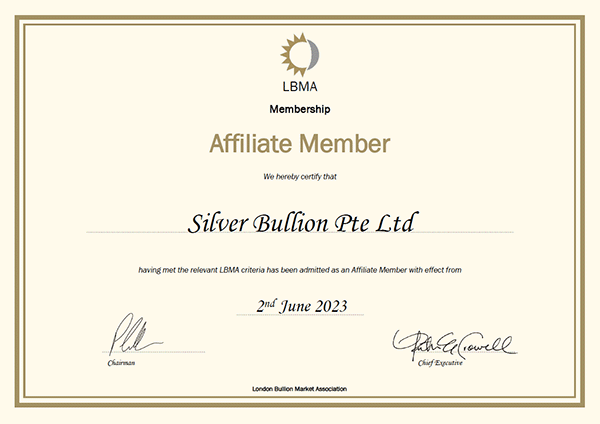
DUX IS 100% NON-DESTRUCTIVE GOLD TESTING
Unlike destructive testing methods like an acid test or the fire assay method, Silver Bullion's DUX testing method is 100% non-destructive. Our testing of your bullion will not result in damage or any material loss.
Most of DUX testing's different testing methods can be performed easily with fast results. The main factor that is time-consuming is the quantity of bullion tested. Since its introduction in 2012, our DUX testing method has authenticated over 1 million troy ounces of bullion for our clients.
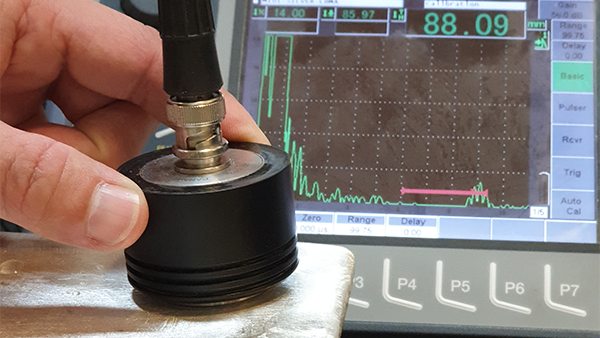
SILVER BULLION'S DUX TESTING IS A HEAVILY MONITORED PROCESS
All precious metals transferred by our clients into our vault, The Safe House, is authenticated using DUX testing. This ensures the genuineness of clients' precious metals and allows any future sell-back of bullion to be a swift and guaranteed process.
All testing labs at Silver Bullion have multiple CCTV cameras, recording the entire process from unpacking sent bullion and testing by our vault technicians. Should there be bullion tested with suspect results, the process of repackaging said bullion into uniquely identified tamper-evident bags is also recorded by our vault's CCTV cameras. This ensures full transparency if bullion failing DUX testing is to be returned to the sender.
All test results are immediately uploaded into our testing database and compared to our library of expected tolerances. This library of testing data is compiled from our years of authenticating over 1 million troy ounces of bullion bars and coins using our density tests, ultrasound tests, X-ray fluorescence tests, and electrical conductivity measurement tests. Every phase of DUX testing is documented, guaranteeing accuracy and reliability.
VERIFY DUX TESTING RESULTS ONLINE
Tamper Proof Labels (TPL) with unique Test IDs are applied to DUX-tested precious metals for identification.
As an additional guarantee for clients, Silver Bullion offers the option of checking and retrieval of DUX testing results from our website in addition to printed test reports, using the Test IDs. Moreover, a client can choose it as the preferred method for obtaining the test results. It is vital that the online data matches the printed test result.
Even if clients privately sell bullion with Tamper Proof Labels to another party, the new owner can check the bullion's testing results with the Test ID of the bullion bar or coin.
The Takeaway
When it comes to precious metal authentication, DUX testing emerges as a beacon of reliability and precision. Developed by Silver Bullion, this precious metal testing method amalgamates four rigorous tests - Density, Ultrasound, X-ray Fluorescence, and Electrical Conductivity Measurement - each targeting distinct physical characteristics of metals. This rigorous approach ensures the genuineness of bullion and adeptly identifies even the most sophisticated counterfeits.
The superiority of DUX testing is further underscored by its non-destructive nature, ensuring that the precious metals retain their value post-testing. By offering a comprehensive analysis that goes beyond mere surface evaluation, DUX testing instills confidence in both sellers and buyers, ensuring that the bullion's authenticity and purity are beyond reproach.
As counterfeit techniques evolve, it is important to have a precious metal testing method that stays ahead of the curve, and DUX testing stands as a testament to such innovation in the precious metals industry. This allows our customers buying gold and buying silver to have absolute peace of mind.